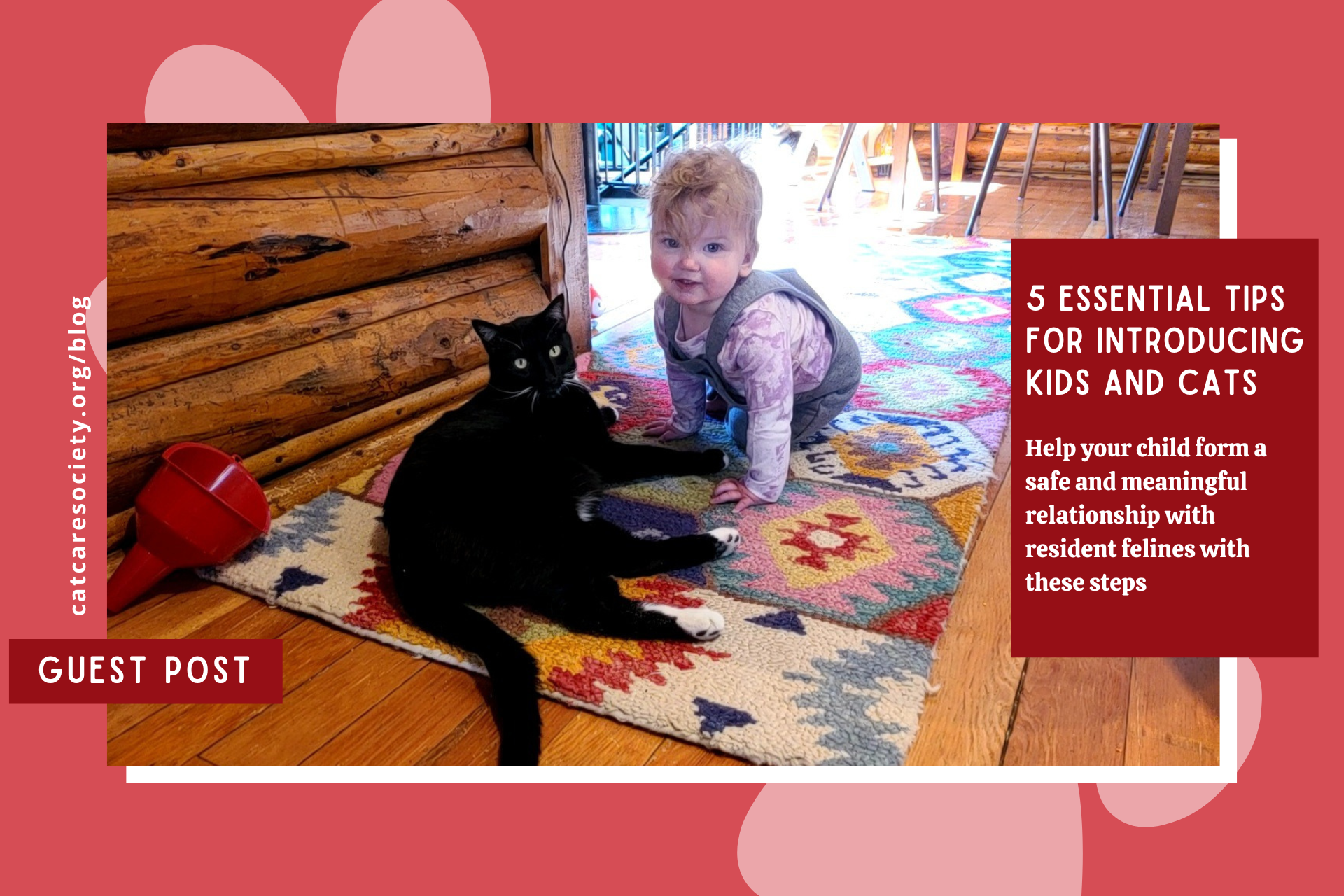Children and cats have the potential to become purrfect companions. Cats can teach children valuable life lessons about responsibility, empathy and respecting boundaries. Likewise, a child can become another trusted human for the cat, providing a cuddly lap to sleep on. However, it is crucial to plan a new introduction with care to ensure a pawsitive experience for both. In this article, we will explore essential tips for introducing children and cats so that they can foster a strong bond in a safe and harmonious environment.
Teach Respect for Boundaries
The first and most important step in introducing children to cats is teaching the child to respect the cat’s boundaries. Explain that cats have their own personal space and may not always want to be cuddled or played with. Every cat will have his or her own unique preferences for contact and interactions. Demonstrate how to approach the cat calmly and let the feline initiate contact. Additionally, ensure the cat always has a designated place to retreat, if needed. Teaching respect for boundaries ensures that both the child and the cat feel comfortable and safe in each other’s presence.
Educate About Cat Behavior
Understanding cat behavior is key to a successful introduction. Educate your child about common feline behaviors such as purring, tail flicking and ear movements. Explain that cats use body language to communicate their feelings and emotions. This knowledge will help your child interpret the cat’s signals, leading to better interactions and a deeper understanding of their feline friend’s emotions.
Supervise Initial Interactions
Supervision is crucial, especially for young children. Encourage your child to sit quietly and let the cat approach at their own pace. Plan to keep the interaction short at first, and if the cat’s body language begins to show signs of overwhelm, tell the child that the cat needs a break or some time alone. Gradually increase the duration of interactions as both the child and the cat become more comfortable with each other’s presence.
Teach Gentle Handling
Young children are naturally curious and want to touch new things around them, especially things that move, including swishy cat tails, but this can sometimes lead to rough handling. It is important to teach your child how to handle a cat gently and with care. Demonstrate the proper way to pet a cat, emphasizing avoiding sensitive areas like the belly or tail. Encourage soft strokes and provide positive reinforcement when the child shows gentle and respectful behavior toward the cat.
If the child starts playing rough with the cat, such as pulling a cat’s tail, ears or whiskers, firmly tell them to stop and redirect them on how to pet gently. It’s important to intervene, even if the cat seems unbothered, because you don’t want the child to assume that all cats are comfortable with rough play.
Involve Children in Cat Care
Involving children in the care of the cat fosters a sense of responsibility and strengthens their bond. Assign age-appropriate tasks to your child, such as feeding, grooming or playing with the cat using interactive toys. Supervised play allows children to understand the cat’s natural instincts and provides an outlet for their energy. However, always supervise young children during these activities to ensure the safety of both the child and the cat.

Did Your Child and Cat Have a Claw-ful First Introduction?
That’s OK! There are some remedial steps you can take to ensure a more successful reintroduction. The following tips may also be useful for first introductions, especially if you’re working with a child or cat who are known to be slow at warming up to new situations.
- Place a blanket or towel with the child’s scent on the cat’s bed to help the cat get familiar with the child’s scent.
- Allow the child and cat to see each other, but with a barrier between them, such as a screen door or baby gate.
- Reintroduce with much shorter interaction times and strict supervision. It may even start with just having the child and cat being comfortable being in the same room without any direct interaction. Always ensure the cat has a way to escape the room.
Introducing children to cats can be a delightful and enriching experience. By teaching respect, understanding and responsibility, you can help foster a strong and loving bond between your child and their feline friend. Remember to supervise initial interactions, encourage gentle handling and involve children in cat care. By following these guidelines, you’re setting the stage for a lifetime of companionship and cherished memories between the child and cat.
If you’re considering welcoming a new cat into your home, we invite you to explore Cat Care Society’s current adoptable cats, as well as our foster program. And, don’t forget to read more blog posts for additional resources on creating a safe and comfortable home for your feline friends.
About the Author: Beth Dokolasa is a volunteer for Cat Care Society and served on the organization’s junior board. She is an instructional developer for Natural Grocers and lives in Indian Hills, Colo., with her husband, young daughter, and two cats, Techno and Digit.
This post was authored and edited according to Cat Care Society’s editorial standards and style. Opinions expressed may not necessarily reflect that of CCS.





